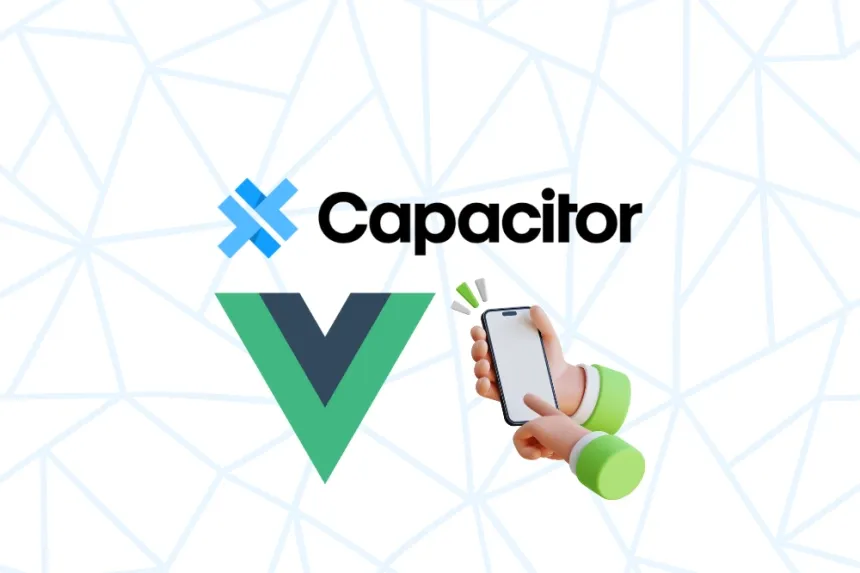Mobile Application Development with Vue.js and Capacitor A Practical Approach


Mobile application development has gained significant popularity in recent years. With the growing demand for cross-platform applications, frameworks like Vue.js and Capacitor have become essential tools for developers. In this article, we will delve into how to combine Vue.js and Capacitor to create mobile applications efficiently and effectively.
What is Vue.js?
Advantages of Using Vue.js
Vue.js is a progressive JavaScript framework used for building user interfaces. Some of its advantages include:
- Lightweight and easy to learn: Perfect for developers new to the JavaScript ecosystem.
- Reusable components: Facilitates the creation of modular applications.
- Easy integration: Can be integrated with other projects and libraries.
What is Capacitor?
Features of Capacitor
Capacitor is an open-source tool created by the team behind Ionic. It allows developers to build native and web applications using web technologies. Some of its features include:
- Cross-platform support: Develop applications for iOS, Android, and the web from a single codebase.
- Access to native functionalities: You can use native mobile device APIs through plugins.
Combining Vue.js and Capacitor
The combination of Vue.js and Capacitor offers an excellent foundation for mobile application development. It enables you to build an application using a popular and robust framework, while Capacitor simplifies the creation of native application packages.
Installation and Configuration
Step 1: Set Up the Environment
Before you start, ensure that you have Node.js and npm installed. Then, install Vue CLI if you haven't done so yet:
npm install -g @vue/cli
Step 2: Create a Vue.js Project
Create a new Vue.js project by running:
vue create project-name
Follow the instructions to select your desired options.
Step 3: Install Capacitor
Navigate to the created project folder and run the following command to install Capacitor:
npm install @capacitor/core @capacitor/cli
Step 4: Initialize Capacitor
Once installed, initialize Capacitor:
npx cap init project-name com.example.app
This action will create the necessary configuration files for Capacitor.
Integration of Vue.js and Capacitor
Now that you have both, you can start developing your application.
Step 5: Configure the Project
In the capacitor.config.json file, ensure that your application URL is set to point to the output folder of Vue.js:
{
"webDir": "dist",
...
}Step 6: Build and Synchronize the Application
Whenever you make changes to your project, you will need to build it and synchronize it with Capacitor. Run:
npm run build npx cap sync
This will ensure that your changes are reflected in the mobile application.
Developing Mobile Features
Accessing Native APIs
With Capacitor, you can access a variety of native APIs. For example, to access the camera, you first need to install the corresponding plugin:
npm install @capacitor/camera npx cap sync
Then, you can use it in your Vue component like this:
import { Camera, CameraResultType } from '@capacitor/camera';
async function takePhoto() {
const image = await Camera.getPhoto({
resultType: CameraResultType.Uri,
});
// Handle the image here
}Managing Navigation
Managing navigation is crucial in mobile applications. Vue Router makes this process easier. Install Vue Router in your project:
npm install vue-router
Create the necessary routes in your application and ensure proper navigation handling between pages.
Testing and Deployment
Testing on Real Devices
To test your application on a real device, connect your device and run:
npx cap open ios
or
npx cap open android
This will open your project in Xcode or Android Studio, where you can run the application on your device.
Publishing to App Stores
Once you are ready to publish, you will need to follow Apple's App Store and Google Play guidelines to ensure your application meets all requirements.
Conclusion
Mobile application development using Vue.js and Capacitor provides an efficient and effective way to create modern, responsive applications. The combination of these two tools not only allows for code reuse but also facilitates access to native features, resulting in an enhanced user experience.
If you're looking for a way to venture into mobile development, don't hesitate to explore Vue.js and Capacitor. The future of application development is bright and full of opportunities!
I hope this article has provided you with a clear insight into mobile application development using Vue.js and Capacitor. If you want to delve deeper into any specific aspect, feel free to ask.
Article information
Key tips
Take your time to understand each concept before moving on to the next one.
Practice the examples in your own development environment for better understanding.
Don't hesitate to review the additional resources mentioned in the article.



















